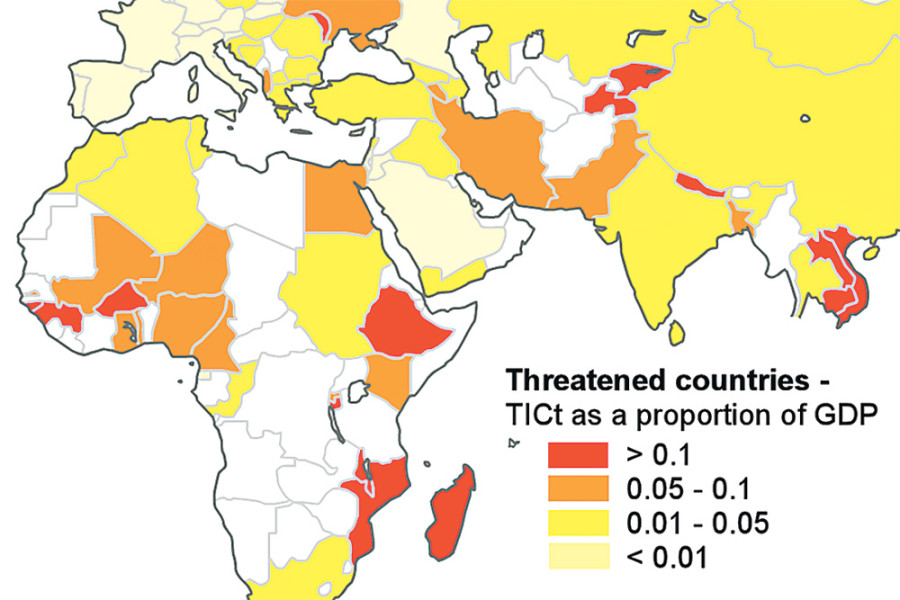Miscellaneous
Agri sector of Nepal ‘facing invasive threats’
Nepal is among the top 10 countries in the world threatened by rapid spread of invasive insect pests and pathogens to the agriculture sector, in proportion to its Gross Development Product (GDP), according to a new research.
Pragati Shahi
Nepal is among the top 10 countries in the world threatened by rapid spread of invasive insect pests and pathogens to the agriculture sector, in proportion to its Gross Development Product (GDP), according to a new research.
The findings of the study titled ‘Global threat to agriculture from invasive species’, published in a leading US scientific journal, Proceedings of the National Academy of Sciences, has ranked Nepal in eighth position, among the 124 countries, including the US and China, that face greatest threat to agricultural production from the invasive species. The ranking system was based on the information obtained from the analyses of the worldwide distribution of almost 1,300 insect pests and fungal pathogens, the direction of trade flow between the countries, crops grown in each country and the GDP of each country.
Developing countries from sub-saharan-Africa and Asia marked as red are listed under the top 16 countries most at risk from the spread of invasive species that are not native and cause harm to the environment.
“Developing countries generally do not have diverse economic industries and are subsequently disproportionately more dependent on agriculture,” the report says, adding, “As a result, any threat from invasive species can potentially have a greater relative impact on these countries.”
With increased globalisation and connectedness via world trade, the threat from invasive species arriving to countries in which they were previously absent is expected to increase, it says.
“Invasive insects and pathogens are more problematic to agriculture sector compared to plant species,” said Bharat Babu Shrestha, associate professor at the Central Department of Botany of Tribhuwan University. Shrestha, who was involved in mapping invasive plant species across the country in 2013, says the diverse geographical variation favours the invasion by plants, insects and pathogens, along with the animals in Nepal.
The number of invasive insect pests and pathogens species that occur in Nepal have not yet been documented properly. But some pests like Potato Tuber Moth (PTM) Phthorimaea operculella is already established as pests causing serious problems in agriculture and affecting the crop productivity of potatoes. Other insect pests like Quadraspidiotus perniciosus, Leucaena Psyllid Heteropsylla cubana and Lissachatina fulica, are identified as invasive insect pest threatening the agriculture production in the country.
“Lack of proper mechanism to check pathway of the these invasive species and poor quarantine system in the country that has open border with India makes it relatively more vulnerable to their threats,” says Shrestha.
Though, very little has been done to document invasive pest and insects, Shrestha and his team in 2013 conducted mapping of invasive plant species across the country and identified 25 species problematic to agriculture sector. Some plant species, including Parthenium hysterophorus, a noxious weed with origin in Central America is growing rapidly in the last three years. The seeds of this invasive weed species are considered to have entered Nepal’s Tarai and inner Tarai districts and invaded the agriculture crops, especially threatening maize, potato and sugarcane among others, according to him. Other invasive weed species that are threatening agriculture include Ageratum houstonianum, Oxalis latifolia and Argemone mexicana among others.
“Almost 90 percent of the invasive plant species that can potentially have greater impact on agriculture and forest have originated from Central and Southern America, then to India before entering Nepal through trade link and commodity movement,” he says.




 10.12°C Kathmandu
10.12°C Kathmandu










